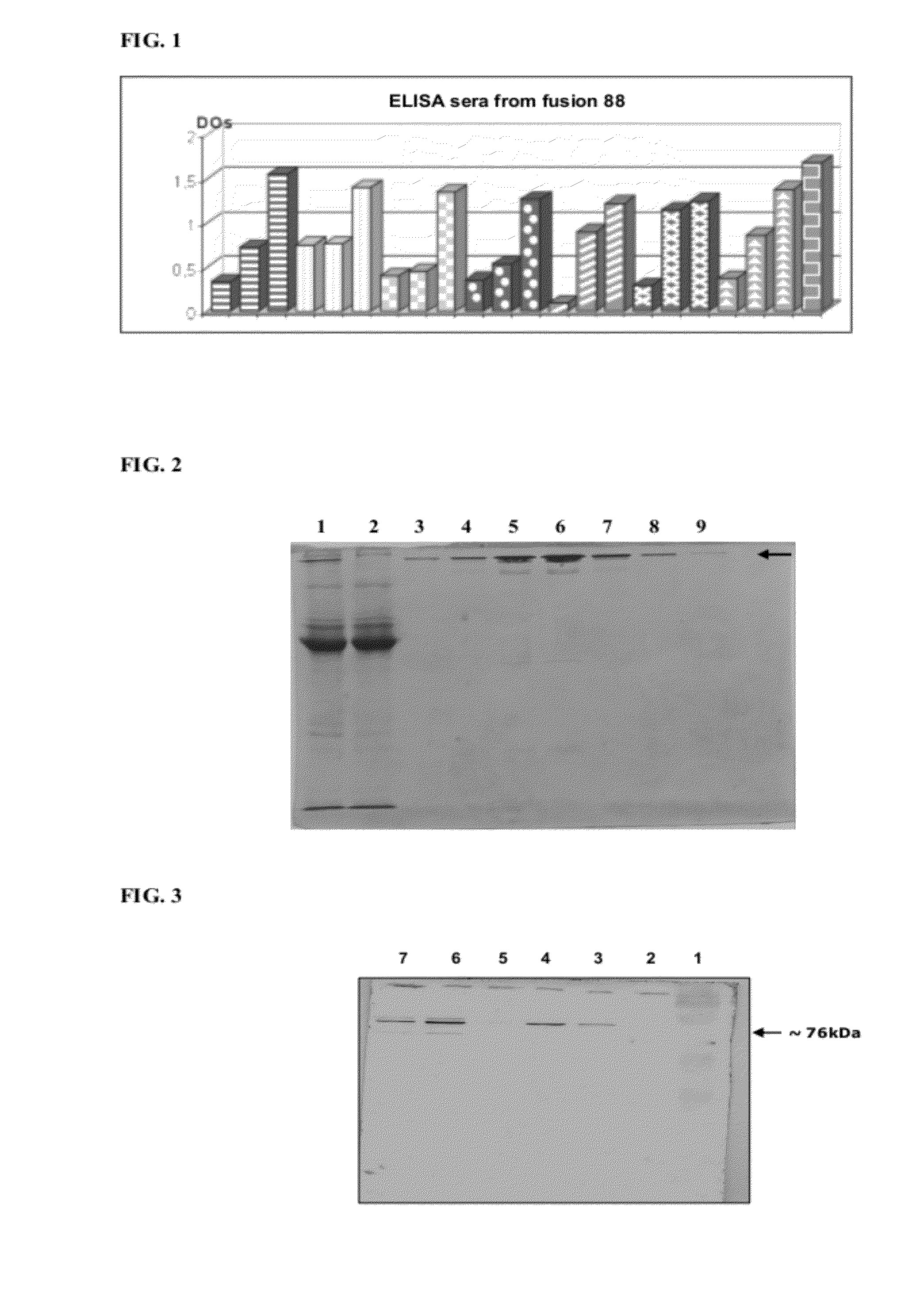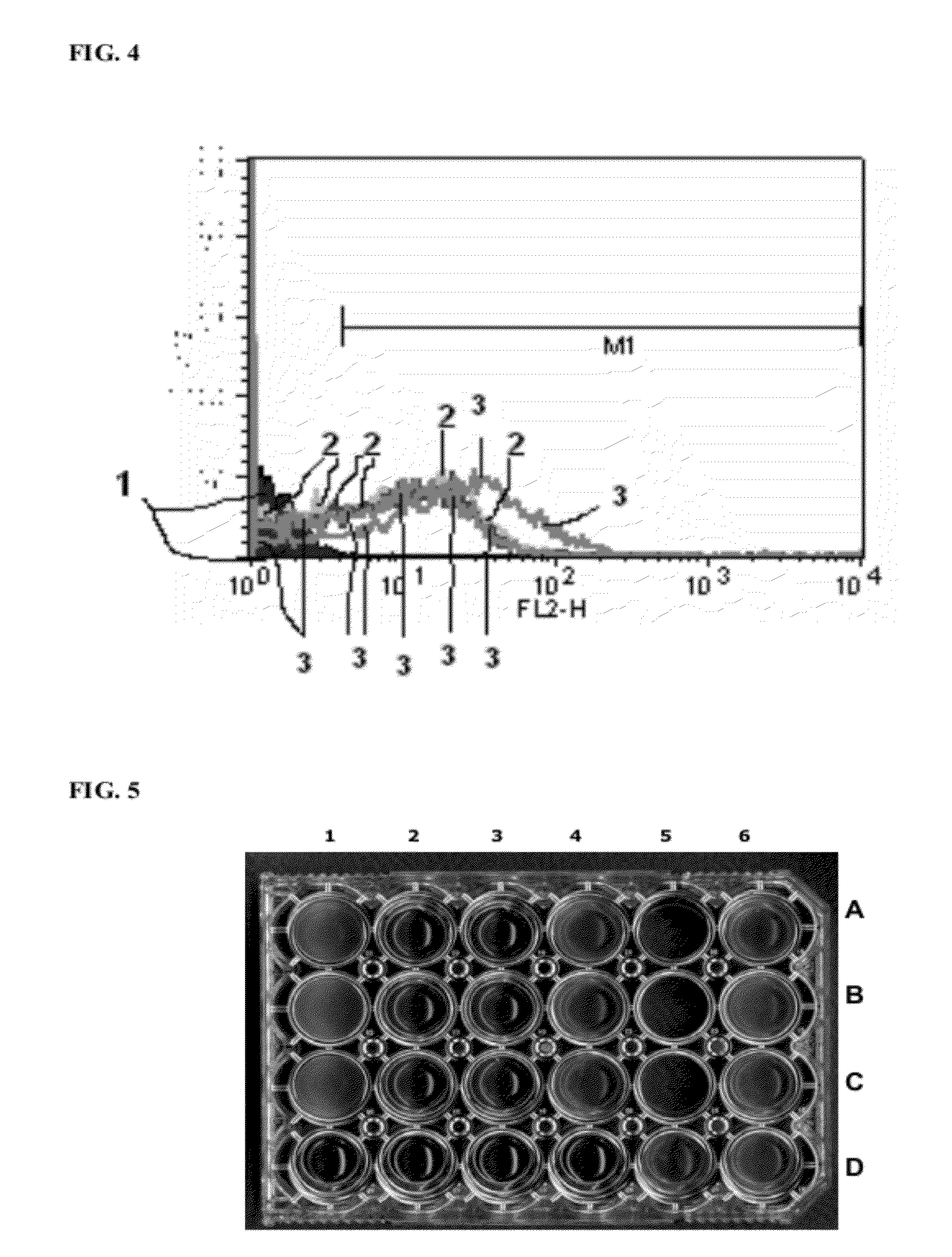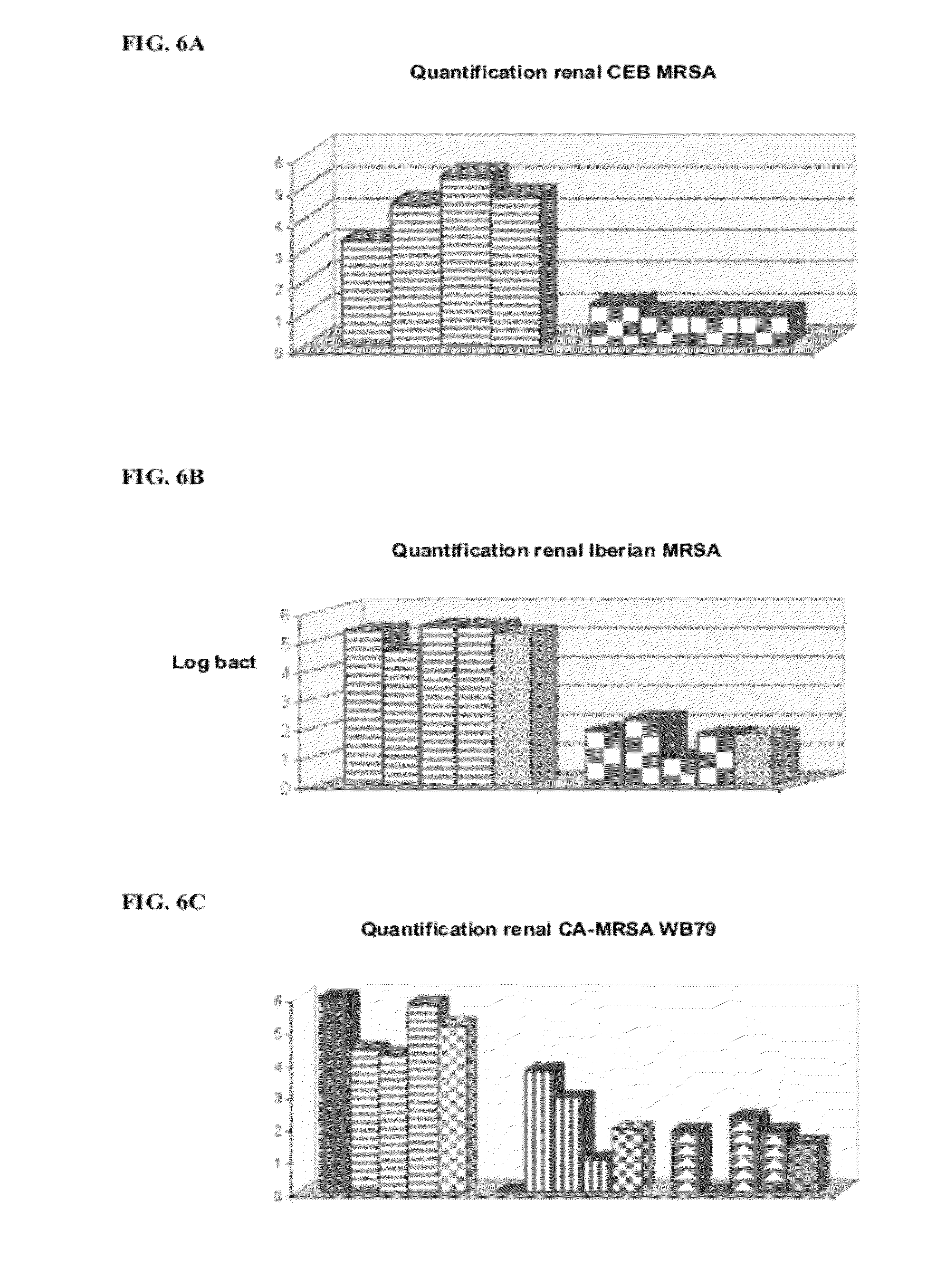Monoclonal antibodies against the pbp2-a protein and homologous sequences for the treatment of infections by and immunodiagnostics of bacteria of the firmicutes phylum
a technology of pbp2a protein and antibody, which is applied in the field of monoclonal antibodies against the pbp2a protein and homologous sequences for the treatment of infections by and immunodiagnostics of bacteria, can solve the problems of long hospitalization time, higher cost of treatment of patients infected by this pathogen, and higher cos
- Summary
- Abstract
- Description
- Claims
- Application Information
AI Technical Summary
Problems solved by technology
Method used
Image
Examples
example 2
1. Obtainment of Murine Anti-PBP2a Monoclonal Antibodies:
[0087]A group of animals was subjected to the immunization protocol according to what was previously described. The result evaluated by ELISA test is described in FIG. 1.
[0088]After the fusion process (fusion of number 90-LATAM), the supernatant from 96 cavities (hybridomas) was analyzed by ELISA test. From this total, the five best samples were selected and the cells were expanded (cloning). Then, again, the resulting supernatants were analyzed by ELISA. Positive samples were validated by immunoblotting against the purified recombinant protein (PBP2a) for validating the results obtained by ELISA. The final result is in Table I.
[0089]FIG. 1 reveals the result from the immunoenzyme test (ELISA) of the sera of the immunized animals for producing anti-PBP2a antibodies. Each dashing corresponds to the 1:100 diluted serum of the immunized animals. Positive control serum is in angular dashing []. First bar of each dashing: pre-immun...
example 3
[0126]A second study using CEB MRSA strain was conducted, following the same protocol described in Example 1, item 7.2, with adding of two pulses of agitation by vortex, of 15 seconds each one, after each washing; aiming to disaggregate Staphylococcus aureus agglomerates and to increase the quantity of PBP2a exposed to antibodies.
[0127]The markers FITC (fluorescein isothiocyanate) and PE (phycoerythrin) were tested, with control samples (i. pure bacterium, without contact with monoclonal antibody; and ii. pure bacterium plus FITC or PE marker) and the sample treated with monoclonal antibody and subjected to marking with PE or FITC being analyzed. The readings in FACsalibur device were performed in linear mode.
[0128]FIG. 10 is a graph of analysis by flow cytometry of MRSA samples in presence of FITC-marked anti-PBP2a antibody. Curve (x) corresponds to non-marked sample, and curve (y) corresponds to marked sample.
[0129]The obtained results showed that about 22% of marked population wa...
example 4
[0130]The inventors still surveyed the protection conferred by anti-PBP2a monoclonal antibody from methicillin-resistant Staphylococcus aureus against enterococcus.
[0131]According to what was already previously mentioned here, the antibody recognizes proteins present in Enterococcus sp. strains, probably PBP5—a transpeptidase with low affinity for beta-lactams, present in all enterococcus strains, with molecular weight of approximately 76 kDa (237 amino acids). This enzyme presents homology referring to PBP2a of MRSA, according to alignment (ClustalW) related below:
PBP5EfasMERSNRNKKSSKNPLILGVSALVLIAAAVGGYYAYSQWQAKQELAEAKKTATTFLNVLSK60PBP5efam-----KHGKNRTGAYIAG--AVILIAAAGGGYFYYQHYQETQAVEAGEKTVEQFVQALNK53PBP2a------------MKKIKIVPLILIVVVVGFGIYFYASKDKEINNTIDAIEDKNFKQVYKD48 * ::::... * : * : * :. ..PBP5EfasQEFDKLPSVVQEASLKKNGYDTKSVVEKYQAIYSGIQAEGVKASDVQVKKAKDNQYTFTY120PBP5efamGDYNKAAEMTSKKAANKSALSEKEILDKYQNIYGAADVKGLQISNLKVDKKDDSTYSFSY113PBP2aSSY-------...
PUM
| Property | Measurement | Unit |
|---|---|---|
| pH | aaaaa | aaaaa |
| pH | aaaaa | aaaaa |
| molecular weight | aaaaa | aaaaa |
Abstract
Description
Claims
Application Information
 Login to View More
Login to View More - R&D
- Intellectual Property
- Life Sciences
- Materials
- Tech Scout
- Unparalleled Data Quality
- Higher Quality Content
- 60% Fewer Hallucinations
Browse by: Latest US Patents, China's latest patents, Technical Efficacy Thesaurus, Application Domain, Technology Topic, Popular Technical Reports.
© 2025 PatSnap. All rights reserved.Legal|Privacy policy|Modern Slavery Act Transparency Statement|Sitemap|About US| Contact US: help@patsnap.com



